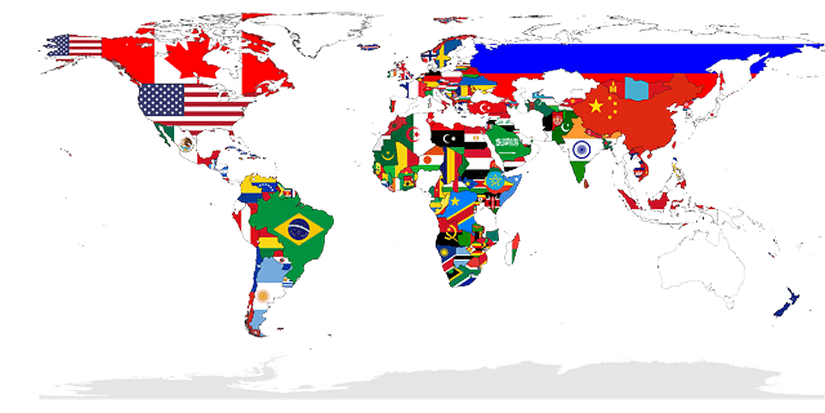This economic gauge “dipped back below zero in less than a year”
By Elliott Wave International
In November 2020, when fears were rampant over a second wave of the coronavirus pandemic, the president of the European Central Bank called for economic stimulus (Reuters):
Facing gloomy outlook, Lagarde calls for unlocking EU aid
In December of 2020, what is known as the Next Generation EU package became operational. This economic aid was massive, amounting to more than €2 trillion at current prices.
But you wouldn’t know it by looking at what’s going on in Germany. It took just 24 months for the European Union’s largest economy to resume its decline.
Here’s an overview from the June 2023 Global Market Perspective, a monthly Elliott Wave International publication which covers an array of financial markets:

Free Reports:
 Download Our Metatrader 4 Indicators – Put Our Free MetaTrader 4 Custom Indicators on your charts when you join our Weekly Newsletter
Download Our Metatrader 4 Indicators – Put Our Free MetaTrader 4 Custom Indicators on your charts when you join our Weekly Newsletter
 Get our Weekly Commitment of Traders Reports - See where the biggest traders (Hedge Funds and Commercial Hedgers) are positioned in the futures markets on a weekly basis.
Get our Weekly Commitment of Traders Reports - See where the biggest traders (Hedge Funds and Commercial Hedgers) are positioned in the futures markets on a weekly basis.
German manufacturing orders (top left) dipped back below zero in less than a year. Industrial orders (bottom left), which had already rebounded before stimulus was enacted, returned to their old growth rate within 18 months.
Meanwhile, producer prices (middle column) fell to 4% yearly growth in April — down from 46% in August 2022 — while wholesale prices, which tend to lead the consumer-prices indexes, have dipped below zero for the first time since December 2021. … The two ZEW surveys shown in the right column reflect sentiment among institutional investors. Their views about the economy’s current situation (top) and its future growth prospects (bottom) are declining from multi-year highs.
As Bloomberg reported on May 25:
Europe’s Economic Engine Is Breaking Down
Germany is at risk of a long, slow decline — with consequences for the whole of the EU
But what about other major economies in the European Union, as well as Britain?
Indeed, what does the economic picture look like in the world’s two biggest economies, the U.S. and China?
Our Global Market Perspective covers 50-plus financial markets as well as the world’s major economies.
Elliott Wave International’s main way to analyze these 50 financial markets is to employ the Elliott wave model.
If you’d like to get insights into Elliott wave analysis, read Frost & Prechter’s Wall Street classic, Elliott Wave Principle: Key to Market Behavior. Here’s a quote from the book:
The Wave Principle is governed by man’s social nature, and since he has such a nature, its expression generates forms. As the forms are repetitive, they have predictive value.
Sometimes the market appears to reflect outside conditions and events, but at other times it is entirely detached from what most people assume are causal conditions. The reason is that the market has a law of its own. It is not propelled by the external causality to which one becomes accustomed in the everyday experiences of life. The path of prices is not a product of news. Nor is the market the cyclically rhythmic machine that some declare it to be. Its movement reflects a repetition of forms that is independent both of presumed causal events and of periodicity.
The market’s progression unfolds in waves. Waves are patterns of directional movement.
If you’d like to read the entire online version of the book for free, you may do so once you become a member of Club EWI, the world’s largest Elliott wave educational community.
A Club EWI membership is also free and allows for complimentary access to a wealth of Elliott wave resources on investing and trading.
Join Club EWI now by following this link: Elliott Wave Principle: Key to Market Behavior.
This article was syndicated by Elliott Wave International and was originally published under the headline How Germany’s Economy is Turning Ugly. EWI is the world’s largest market forecasting firm. Its staff of full-time analysts led by Chartered Market Technician Robert Prechter provides 24-hour-a-day market analysis to institutional and private investors around the world.

- Trump lashed out at the US Federal Reserve chief Jerome Powell with criticism. Energy prices are falling Apr 22, 2025
- EUR/USD Hits Three-Year High as US White House Policy Concerns Mount Apr 21, 2025
- Today is Good Friday — most financial markets will be closed Apr 18, 2025
- EUR/USD in Equilibrium: Quiet Trading Expected on Good Friday Apr 18, 2025
- The Bank of Canada kept the interest rate unchanged. In New Zealand, there is an increase in inflation Apr 17, 2025
- Pound Among the Winners Boosted by US Dollar Weakness and Rate Cut Prospects Apr 17, 2025
- China data beat expectations. Inflationary pressures in Canada continue to ease Apr 16, 2025
- Japanese Yen Surges as Weak US Dollar Fuels Momentum Apr 16, 2025
- Investors welcome tariff reliefs. Demand for safe assets is decreasing Apr 15, 2025
- CN50 waits on key China data Apr 15, 2025
